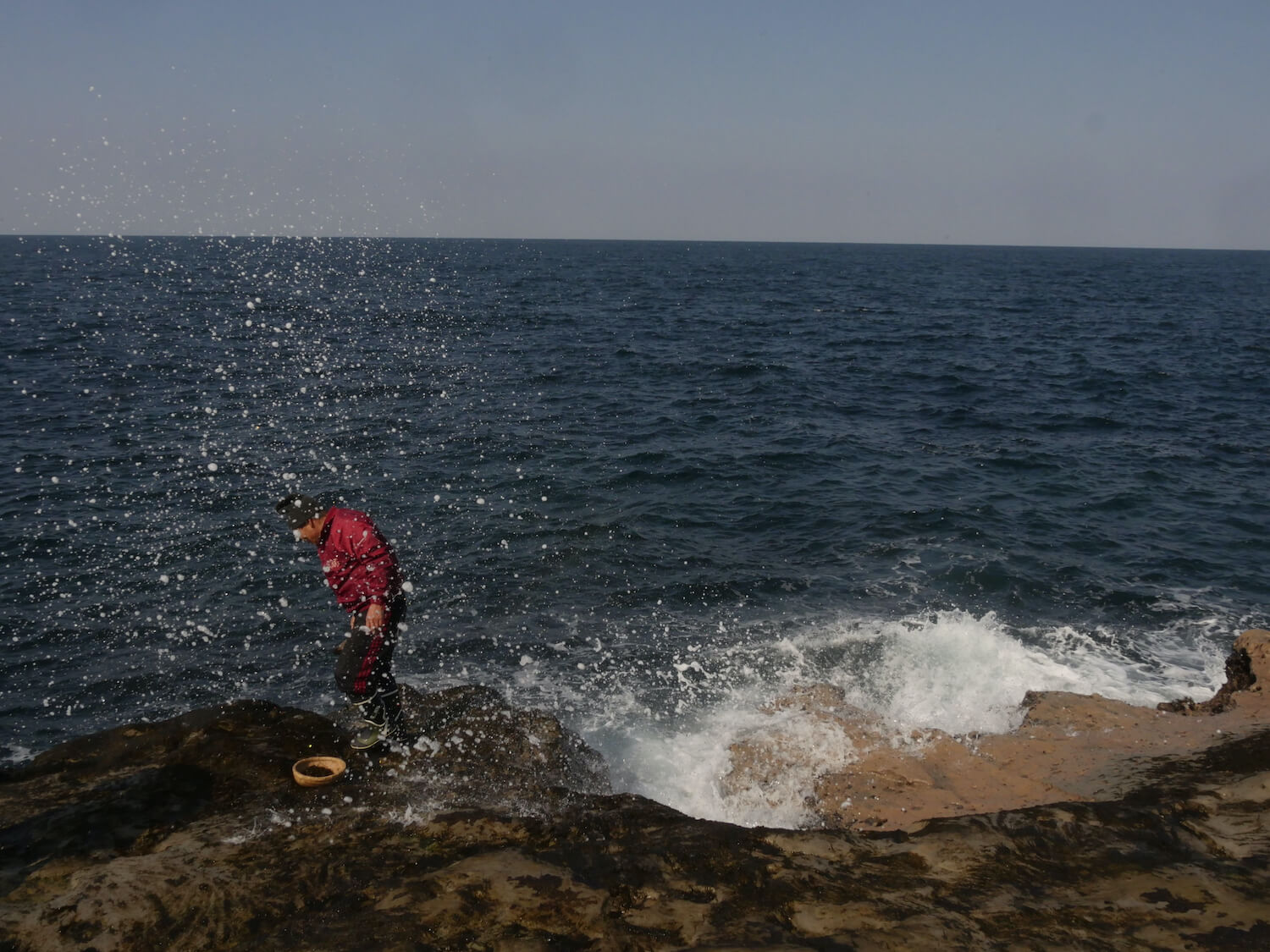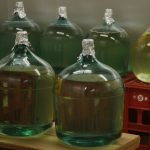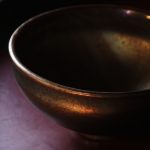
Only a few local villagers are allowed to harvest iwanori in Hiso.
岩海苔穫りが許されているのは数限られた日祖の住人のみ
Hiso’s residents treasure their locally harvested iwanori. This is a special kind of seaweed that can be harvested only in the winter, between mid-November and February, and only by designated local villagers. Today, there are only four villagers left in Hiso who know where and how to harvest it. During the harvesting season, they leave their houses at around seven in the morning, go over the mountain, and arrive at the harvesting area by the shore.
Iwanori, which is literally translated as ‘rock seaweed,’ grows on the rocks by the shore where strong, high waves hit. Over the years, the waves have created a large, flat surface of rocks. This landscape of huge horizontal rocks is called senjojiki, or ‘flooring of a thousand tatami mats.’ Senjojiki is not just a perfect place for iwanori to grow, it also forms one of Hiso’s mesmerising landscapes.
Harvesting iwanori is a perilous task; people have lost their lives while harvesting in the past. But villagers still go harvesting, craving its exceptional flavour and taste. In fact, Hiso’s iwanori is so exceptional that it has even led rulers to seek control over the area. Referring to the period when nori was brought to the Tokugawa shogun (Tono) as a precious gift, Hiso’s iwanori is also known as Tonoshima (Tono Island) nori.
Sadly, some villagers told us that, possibly due to climate change, they can harvest less and less good quality nori nowadays. Iwanori has become much rarer these days, but it continues to be treasured by Hiso villagers.
日祖の住人たちが特別な思いを持っている宝物のようなモノ。それが地元特産の岩海苔だ。11月中旬から2月にかけての冬場、限られた住人だけが採りにいくことを許されている特別な岩のり。今では日祖で岩海苔が採れる場所や採り方を知っているのは、たった4人の住人だけになってしまった。収穫の時期になると、朝7時頃にその住人たちは連れ立って出かける。山を越えて、そして海岸沿いの岩場に向かう。
岩海苔はその名のとおり、岩場で採取される。日祖の岩海苔は、荒波が打ち付ける岩場に生息している。長い年月をかけて波が打ち付けた結果、海岸沿いは岩で出来た平場が広がっている。多くの畳が敷かれたようなこの景観は、千畳敷(せんじょうじき)とよばれ、岩海苔が生育するのに最適な環境だ。そして、この千畳敷の岩場は日祖の魅惑的な景観を生んでいる。
岩海苔の収穫は命がけだ。過去には収穫中に亡くなられた方もいたそうだ。それにもかかわらず、日祖の住人は海苔の特別な風味を求めて収穫に出かける。実際、日祖の岩海苔は、権力者が支配するほど特別な存在だったこともある。徳川将軍に献上されたその歴史から、日祖の岩海苔は「殿島海苔」として知られている。
住人の方の話によると、おそらく温暖化などの気候変動の影響で、残念ながら質の高い岩海苔の収穫量は年々減少している現状があるそうだ。今はもはや岩海苔は非常に希少なものになってしまった。住人たちにとっては宝物のような存在だ。
Text by Maki Nakata
Photography by Edward Hames

